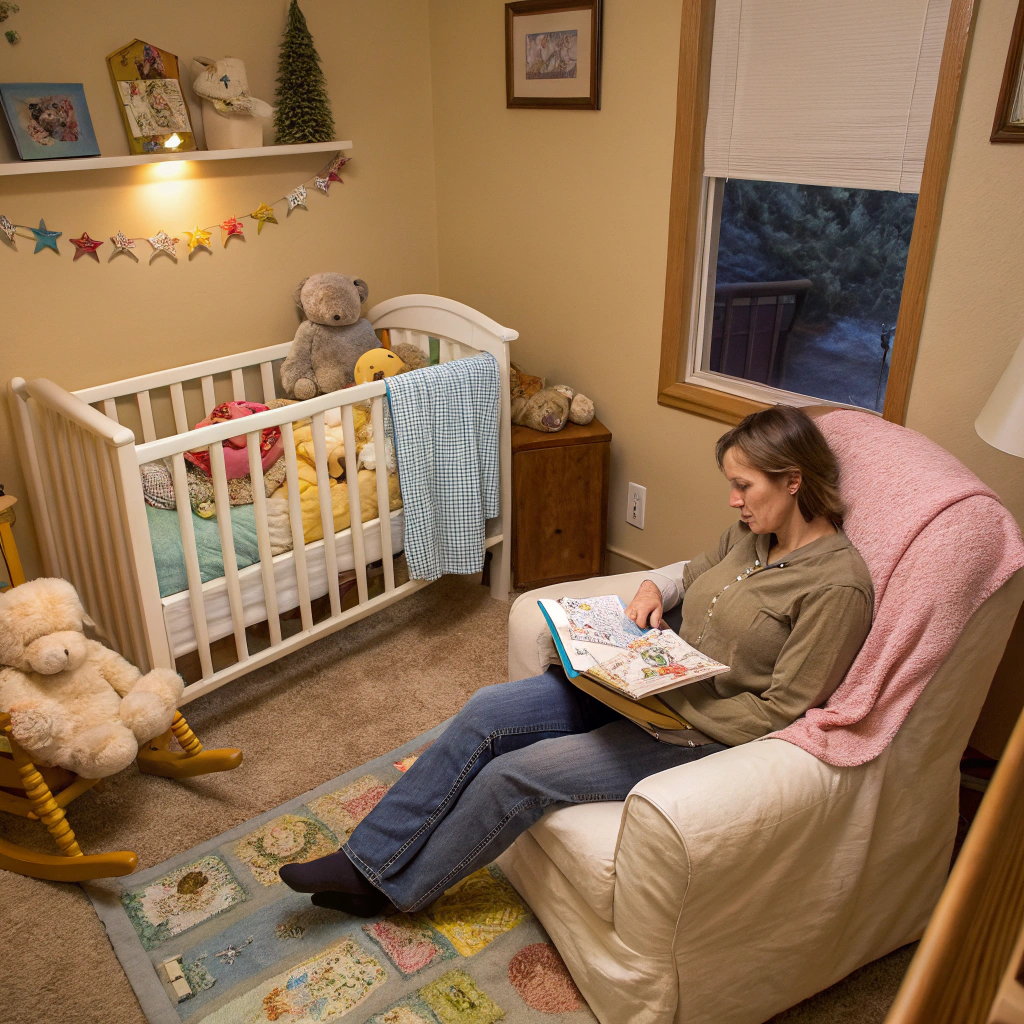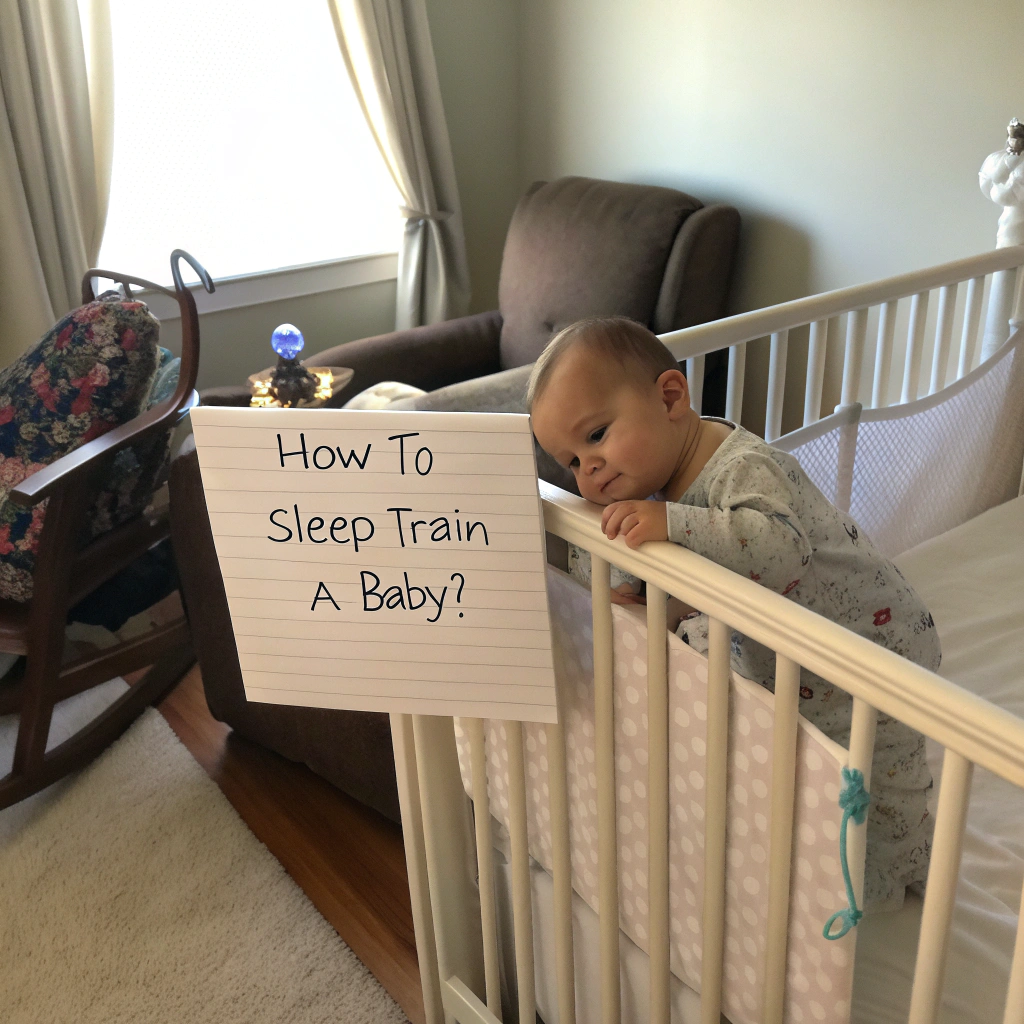Sleep training a baby can feel overwhelming for many parents, but it is an essential step in helping your child develop healthy sleep habits. Learning how to sleep train a baby involves understanding their unique sleep patterns, setting consistent routines, and using gentle techniques to encourage independent sleep. With patience and a well-thought-out plan, you can create a peaceful bedtime routine that benefits both you and your baby.
1. Create a Consistent Bedtime Routine for Sleep Training a Baby
A predictable bedtime routine is the foundation of successful sleep training. Babies thrive on routine because it provides structure and a sense of security. A soothing, consistent schedule helps signal to your baby that it’s time for sleep.
Steps to Establish a Bedtime Routine for Sleep Training a Baby:
- Set a Fixed Bedtime: Babies need adequate sleep, so choose a bedtime that aligns with their natural sleep cycles. For most infants, bedtime typically falls between 6:30 PM and 8:30 PM.
- Incorporate Calming Activities: Add soothing activities to your routine, such as:
- A warm bath to relax your baby.
- Gentle rocking or singing a lullaby.
- Reading a short, calming story.
- Create a Sleep-Inducing Environment: Ensure the bedroom is conducive to sleep by dimming the lights, using blackout curtains, and maintaining a quiet space.
- Introduce a Comfort Object: If your baby is old enough (6 months or older), a small blanket or soft toy can provide comfort.
Why This Works for Sleep Training a Baby?
Babies learn to associate these activities with sleep, which helps their body and mind relax. Over time, a consistent routine helps them transition smoothly from wakefulness to sleep.
2. Choose the Right Sleep Training Method for Your Baby

There isn’t a one-size-fits-all approach to sleep training a baby. Different babies respond to different techniques, so understanding the options will help you find the method that works best for your family.
Common Sleep Training Methods for Babies:
- Cry-It-Out (CIO) Method: Also known as the “extinction method,” this approach involves letting your baby cry for periods without intervention. While it can be emotionally challenging for parents, it often yields results quickly.
- Ferber Method (Graduated Crying): Similar to the CIO method but more gradual. Parents check on the baby at increasing intervals to provide reassurance.
- No-Tears Method: This gentle approach minimizes crying by comforting your baby while they’re in the crib.
- Chair Method: Sit near your baby’s crib and gradually move the chair further away each night. Provides comfort while teaching independence.
Choosing the Best Method for Sleep Training a Baby:
Consider your baby’s temperament, your parenting style, and your ability to stay consistent. For example:
- If your baby becomes more upset with prolonged crying, the no-tears or chair method may be better.
- If you need quicker results, the CIO or Ferber method could work.
3. Be Patient and Flexible with Your Baby’s Sleep Training

Sleep training a baby is a gradual process, and setbacks are normal. Staying patient and adjusting your approach when needed can help you achieve success without unnecessary stress.
Dealing with Common Challenges:
- Sleep Regressions: It’s common for babies to go through sleep regressions around 4 months, 8 months, or during teething. Stick to the routine but be flexible when your baby needs extra comfort.
- Consistency Issues: Both parents (and caregivers) need to follow the same approach. Mixed signals can confuse the baby.
- Night Wakings: If your baby wakes up during the night, avoid creating a habit of rocking or feeding them to sleep unless necessary. Soothe them briefly and allow them to return to sleep independently.
Tips for Staying Flexible During Sleep Training a Baby:
- Track progress in a journal to identify patterns or areas for improvement.
- Celebrate small victories, like your baby sleeping through the night for the first time.
- Remember that every baby is unique. What works for one child may not work for another.
Additional Tips for Successful Sleep Training a Baby
- Know When to Start Sleep Training a Baby: Most experts recommend starting sleep training between 4 to 6 months when babies are developmentally ready.
- Avoid Over-Tiredness: An overtired baby is harder to settle. Watch for sleep cues like rubbing eyes, yawning, or fussiness, and act quickly.
- Practice Daytime Naps: Sleep training isn’t just for nighttime. Consistent daytime nap routines help reinforce good sleep habits.
- Monitor Sleep Environment: Keep the room at a comfortable temperature (68–72°F). Use white noise machines to drown out background noises.
- Stay Calm and Confident: Babies can sense parental anxiety. Approach sleep training with a calm, confident demeanor to make the process smoother for both of you.
Why Sleep Training a Baby Matters?
Sleep training not only benefits your baby but also helps parents get the rest they need. Babies who sleep independently often have better mood regulation, improved growth, and healthier development. With consistency, patience, and the right approach, you’ll help your baby establish sleep habits that will last a lifetime.
By following these tips and exploring different sleep training methods, you’ll create a sleep routine that works for your family and enjoy peaceful nights ahead!
Conclusion :
Sleep training a baby is an important step in helping your child develop healthy sleep habits that will benefit both your baby and your family in the long run. By creating a consistent bedtime routine, choosing the right sleep training method, and remaining patient and flexible, you can foster an environment that encourages independent sleep. Remember, every baby is different, and finding the right approach may take time, but with persistence and love, you’ll soon enjoy peaceful nights. With the right techniques, your baby will be on their way to better sleep, and you’ll be able to rest easy knowing you’ve set the foundation for healthy sleep habits that will last a lifetime.

